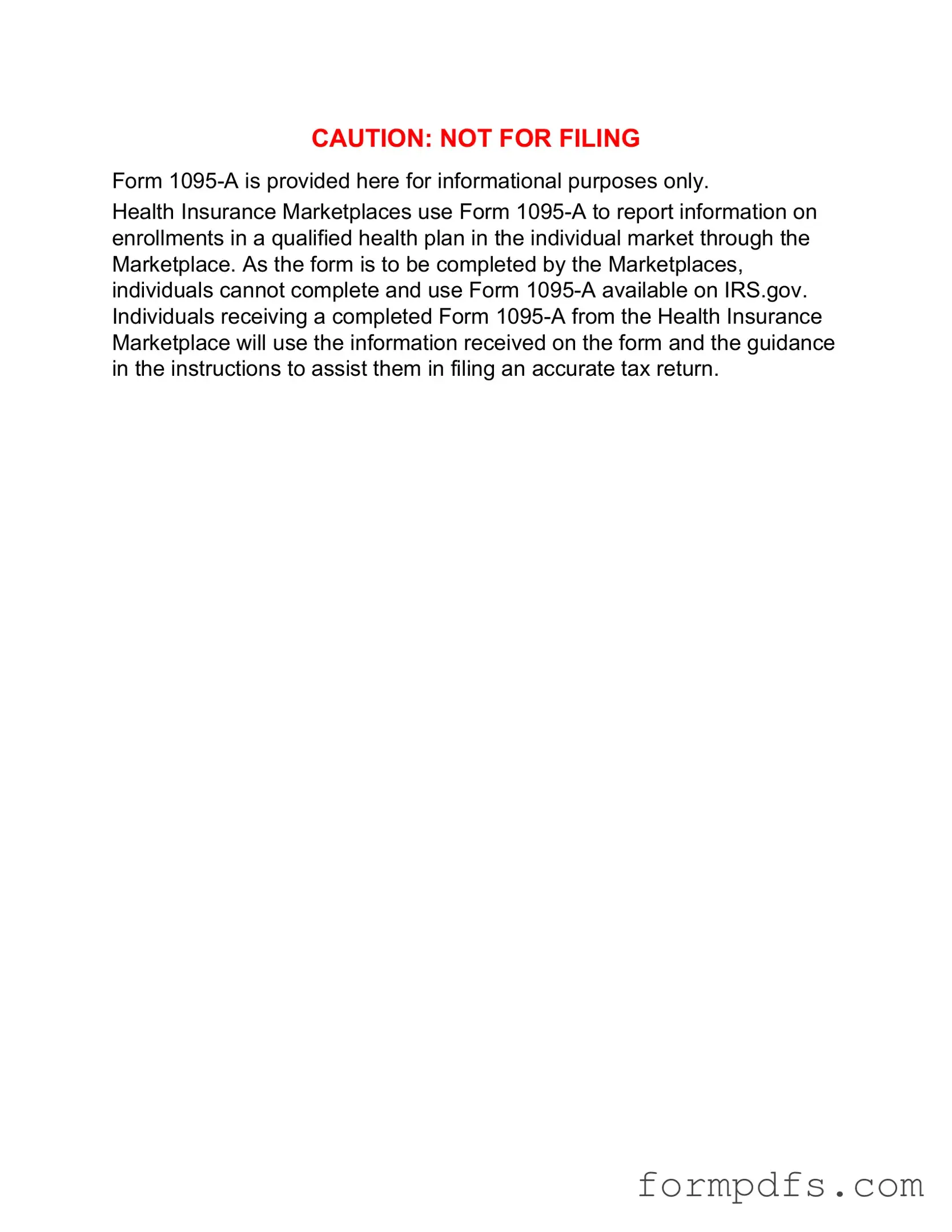What is the IRS 1095-A form?
The IRS 1095-A form is a tax document that provides information about health insurance coverage obtained through the Health Insurance Marketplace. It includes details such as the months you had coverage, the premium amounts, and any premium tax credits you received. This form is essential for individuals who enrolled in a health plan through the Marketplace, as it helps them report their health coverage on their federal tax return.
Who receives the 1095-A form?
Individuals who purchased health insurance through the Health Insurance Marketplace will receive the 1095-A form. The form is sent to both the taxpayer and the IRS. If you enrolled in a Marketplace plan for any part of the year, you should expect to receive this form, usually by the end of January of the following year. If you do not receive it, you should contact the Marketplace where you obtained your coverage.
How do I use the 1095-A form when filing my taxes?
The information on the 1095-A form is used to complete IRS Form 8962, which is necessary for claiming the Premium Tax Credit. This credit helps lower the cost of health insurance for those who qualify based on their income. When filling out your tax return, you will need to input the details from the 1095-A form into Form 8962 to calculate your premium tax credit accurately. Ensure that the information matches your records to avoid delays or issues with your tax return.
What should I do if I find an error on my 1095-A form?
If you discover an error on your 1095-A form, it is important to take action promptly. Contact the Health Insurance Marketplace that issued the form to request a corrected version. Errors may include incorrect coverage dates, premium amounts, or information about household members. Once you receive the corrected form, use it to amend your tax return if you have already filed. Accurate information is crucial to ensure compliance with tax regulations and to avoid potential penalties.
What happens if I don’t receive a 1095-A form?
If you do not receive a 1095-A form and you believe you should have, first check your enrollment status with the Health Insurance Marketplace. If you were covered through the Marketplace and still have not received the form, contact the Marketplace directly for assistance. It is essential to obtain this form, as it is necessary for accurately reporting your health coverage on your tax return. Failing to report your health insurance coverage can lead to complications with your tax filing.
